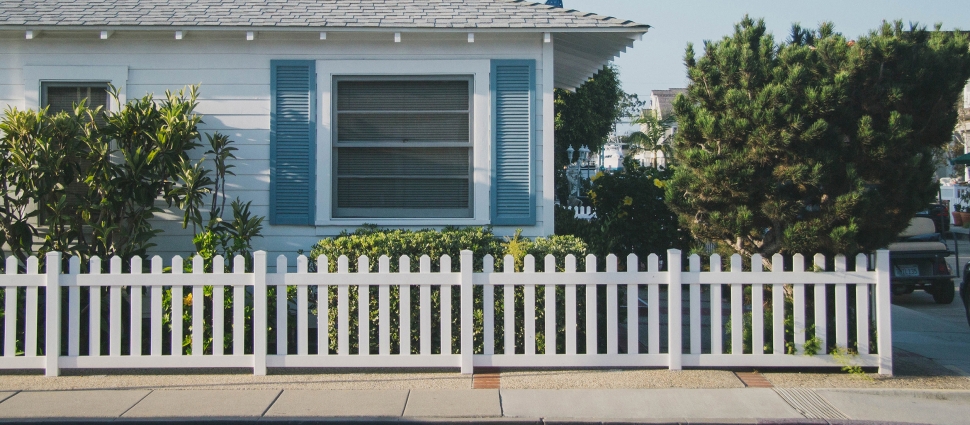Home Visitation: The Worst of Times, the Best of Times

It’s clearly the worst of times. Thousands dying, quarantine tightening, unemployment rising, churches closing – this is the best definition of “worst” that the world has seen for decades. That said, it is also the best of times, at least the best of times for some forms of pastoral care. I especially have in mind home visitation – or to be precise, visits out in front of homes and from a safe distance. Let me offer ten reasons why elderships should see THIS as the moment to visit their flocks.
First, it's still legal. That seems like a strange thing to say when stay-at-home orders and curfews are becoming the norm. And perhaps in some states or countries what I’m about to suggest will at some point be illegal, and thus off limits. But for the moment, there are few limits for those who are walking on sidewalks, as long as we keep six – let’s be generous, even ten – feet away. It is legal, and pastors should enjoy doing things that are legal.
Second, it is meaningful to members. Knowing that your pastor or shepherding elder took the time to drive or walk over shows love, and a real person is much more meaningful, even at ten feet, than a smiling face on a glowing rectangle. Many people are scared. Seeing an enlarged image of your face on the family’s computer screen may further frighten little children in a way that a pastor on a side-walk may not. Seeing a live pastor (at least some live pastors) is sanity inducing.
Third, a home visit – or a sidewalk-out-in-front-of-a-home visit – helps pastors and elders alike know how their flock is doing. Often an in-person visit reveals needs more clearly than a phone call or a screen-time session. This in turn will help you better pray for people under your care and to see them in your mind as you stare at a camera in an empty sanctuary. (Conversely, it may also make them more receptive to your online sermons, a help that many of us desperately need).
Fourth, it’s really doable! Not since the nineteenth century is a pastor so likely to find his congregation members at home, and while a subset of elders will be overworked, a few of them may find extra time on their hands make visits. This is an unparalleled opportunity. What is more, some preachers are taking a break from preaching two sermons on Sunday, and they are asking members to follow another church’s service for the evening. You may have a little extra time and this is a good way to use it. It will feel much more rewarding than catching up on your emails.
Fifth, it’s low-tech (an advantage for some members and ministers alike). You simply need to stand on the sidewalk and they need to open a door. OK, you’ll also need a car, a mobile phone, and an unintimidating opening line: “I’m driving by your house in 15 minutes and would love to stand ten feet from your front door, see how you’re doing, and pray for you. Is anyone at home up for that?” (Mentioning brevity, and maybe repeating the ten-foot distance, is critical).
Sixth, remember that some of your members never want you to be closer than ten feet from them anyway, and they don’t enjoy talking to you for very long. Why not offer them their dream visit?
Seventh, these visits are safe at a distance, and we actually know it. Identifying what is safe was not a luxury enjoyed by pastors in most previous plagues in church history, for whom sickness was a substantial mystery. This coronavirus has mysterious elements, but we know enough to know that at 6-10 feet everyone is safe. Throughout history people wanted their pastors during plagues. Because of the danger of visitation, pastors (such as those at the Westminster Assembly) warmly debated whether they should answer those requests, and if so, how many pastors should do so at risk to themselves, and how many should hold back so that gospel ministry would not be crippled after the plague had passed. Modern medical information offers a simpler matrix for thinking through home visits – although choices about hospital visits for sick members may be agonizing or highly limiting.
Eighth, we need to face the fact that absence from worship on Sundays might not make the heart grow fonder. For our weaker members and occasional attenders, Christians out of sight are Christians out of mind. By visiting we help them see that they matter to us. With the Lord’s blessing, the Christian gospel might matter to them.
Ninth, a few of us are always behind on visits anyway. Here is an opportunity to catch up.
Tenth, this window of opportunity may close, and close for a long time. Getting out while you still can will ease your conscience if suffering increases, and enrich subsequent calls or Zoom meetings if more draconian quarantines are needed for reasons of public safety.
Of course this is work, and we will not all be able to add to what we are doing. But it is huge win if, one way or another, we can share a gospel of good news in a troubled world, for in the face of foolishness, sin, and fear, we proclaim a Saviour whose wisdom, righteousness and courage are ample for all of our faults and failings (1 Cor 1:30-31). Knowing this, and knowing the smile of our Father and the power of the Spirit, we can all be ambitious in using what time, energy and opportunity God does give us. For you, pastors and elders, perhaps try a couple visits, and see how it goes.
Chad Van Dixhoorn (PhD, Cambridge University) is professor of church history and director of the Craig Center for the study of the Westminster Standards at Westminster Theological Seminary. He also serves as an honorary research fellow at the University of East Anglia, Norwich, UK.
Related Links
Theology on the Go: "Pastoral Visitation" (with Chad Vegas)
"Poured Out, Not Burned Out" by Jonathan Master
"Praying Through the Scriptures: Deuteronomy" by Chad Van Dixhoorn
PCRT '08: Persevering with Joy in the Ministry [Download]
PCRT '14: Holiness of the Office of the Pastor [Download]
Confessing the Faith: A Reader's Guide to the Westminster Confession of Faith by Chad Van Dixhoorn




